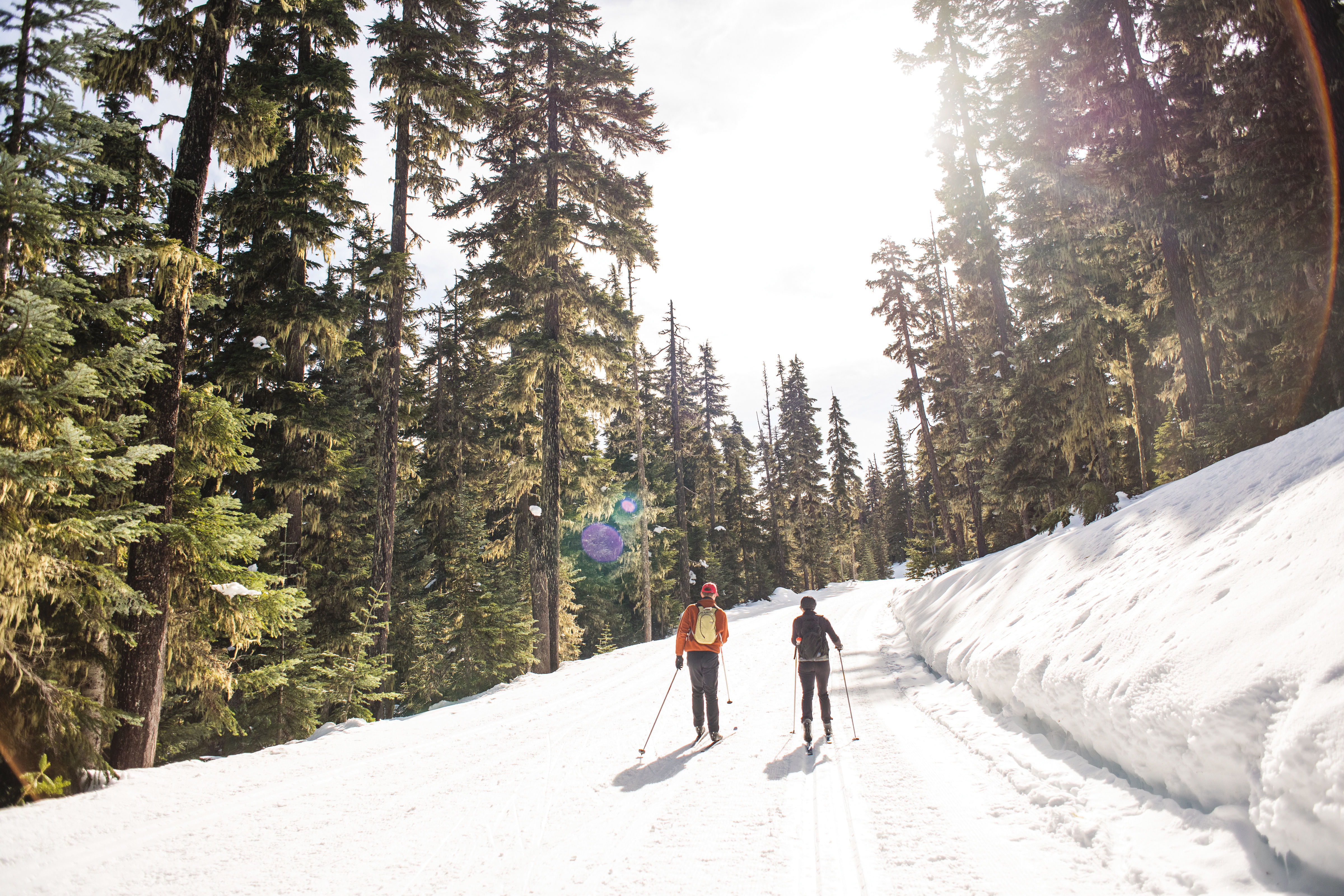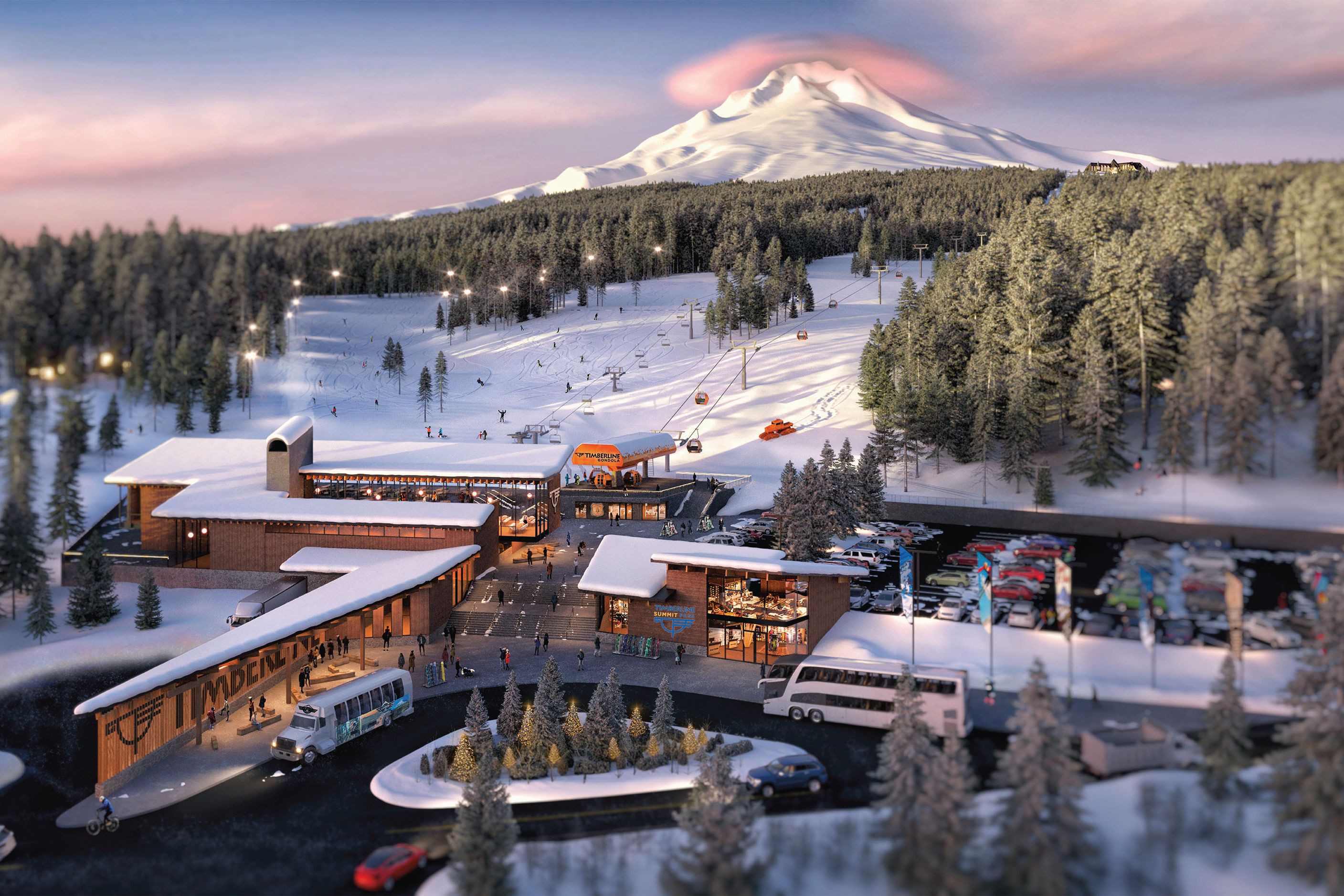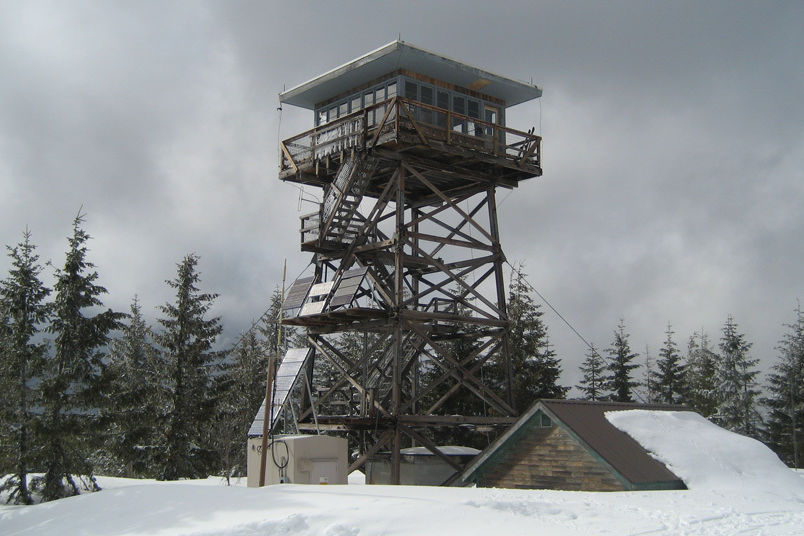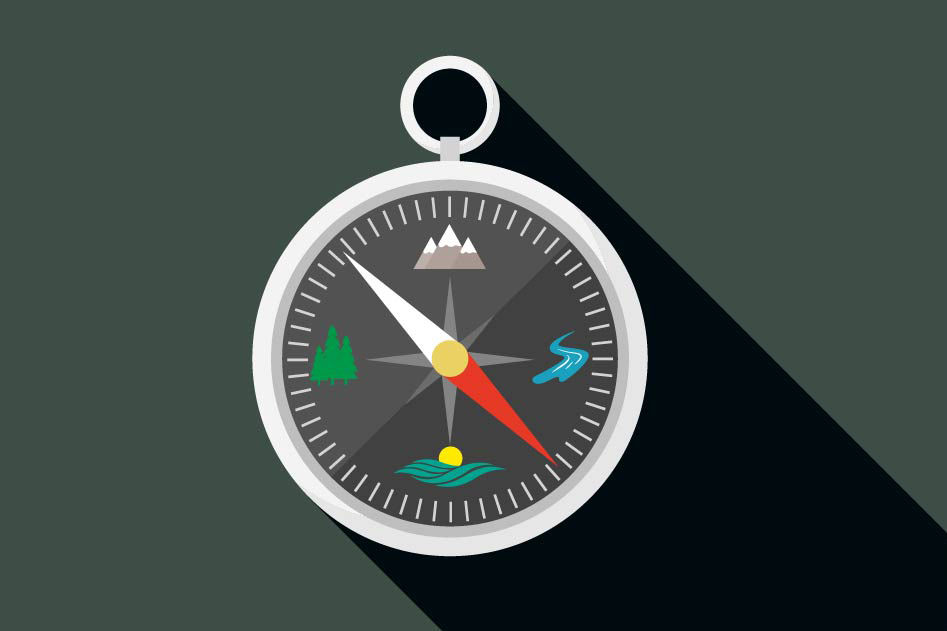12 Oregon Adventures to Get You Outdoors Every Month of the Year
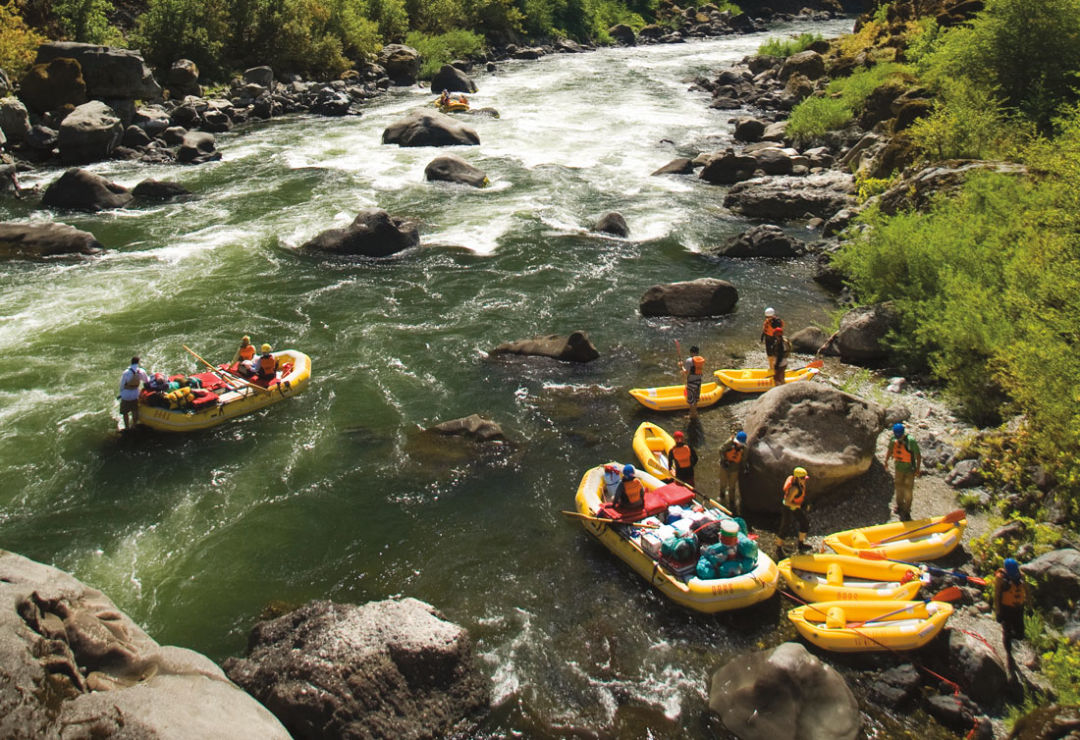
Image: Justin Bailie
It's almost embarrassing how rich in outdoor adventure Oregon is. We know you know this, but seriously—the mountains, the ocean, the desert, the forests, the rivers. Where does one even begin? Before you collapse in overwhelm, take a breath. We've taken care of the hard thinking with these 12 uniquely Oregon outdoor exploits, one for each month of the year.
Jump to the month:
January | February | March | April | May | June | July | August | September | October | November | December
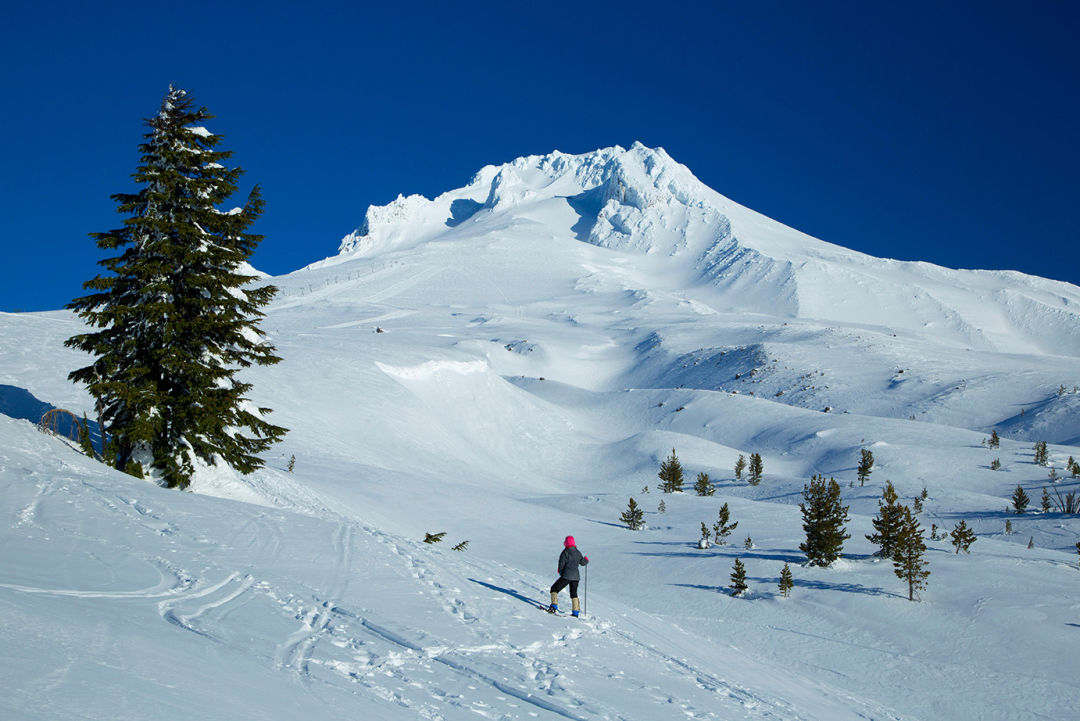
January
Snowshoe at Mount Hood
Snowshoers are a hardy lot, plodding peacefully down the trail as cross-country skiers whip past, directing a glare if you’ve ’shoed in their track. Truth be told, our favorite Oregon snowshoeing spot is in Bend, where strategically placed warming huts dot wondrous trails. But if that’s too far for your tastes, the Mount Hood area has plenty of great jaunts. Beginners will gravitate to the Crosstown Trail, which rises just beyond Government Camp and lets you traverse the woods that are the town’s collective backyard. Try nearly hidden Enid Lake for a good picnic spot. If you want to push yourself, make your way to Twin Lakes, and head out all the way to Upper Twin Lake, leaving the roar of the snowmobiles at Frog Lake Sno-Park behind. During a super-snowy winter, the trails at Pocket Creek Sno-Park are worth exploring, especially since their proximity to Parkdale means you can stop off at cheerful Solera Brewery for killer beer and a surprisingly cosmopolitan menu. —Julia Silverman
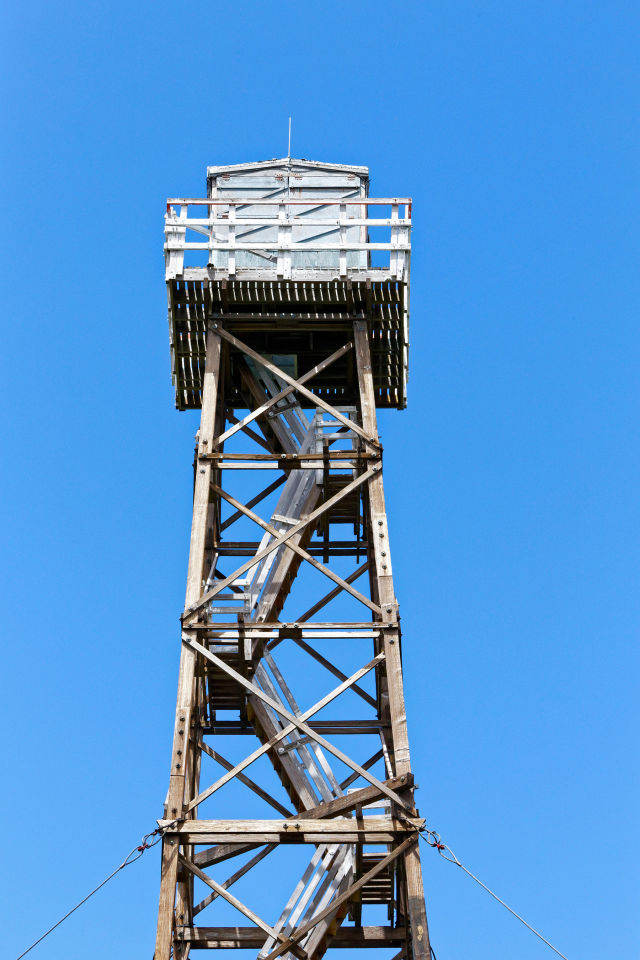
February
Go Camping in the Sky in a Fire Lookout
Built for spotting wildfires—a task now largely left to the remotely operated swivel cam attached to their frames—these cabins on stilts require a serious stair climb (and a snowshoe trek just to get there) but reward with peace and quiet and incomparable views. The easiest ones to reach from Portland are in the Mt. Hood National Forest, on Clear Lake Butte (available November–May) and Fivemile Butte (available year-round). Snagging one can feel like winning the lottery—nights get snatched up as soon as they’re released on recreation.gov six months ahead of time. A bed, a woodstove, a propane cookstove, a map table, and possibly a previous guest’s forgotten half-full whiskey bottle await the lucky winners. —Margaret Seiler
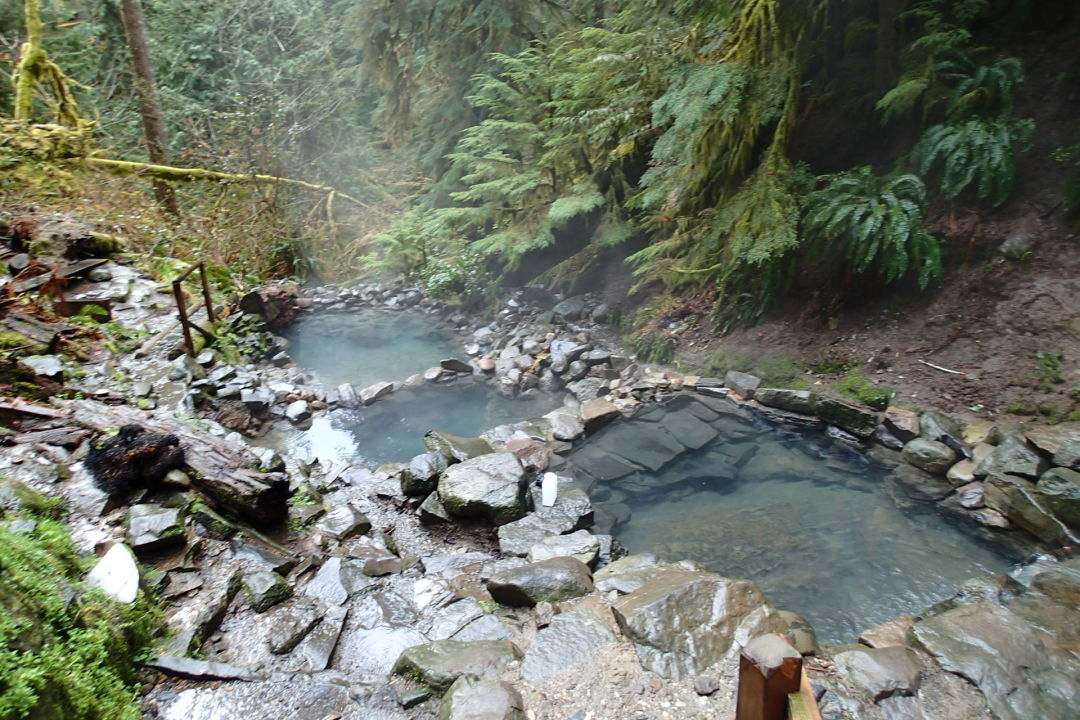
Terwilliger Hot Springs (a.k.a. Cougar Hot Springs) offers three pools of varying heat for soaking in a lush forest setting with easy access from the McKenzie River Highway.
IMAGE: KANE1587/WIKIMEDIA COMMONS
March
Soak at Terwilliger Hot Springs
Nothing says "serene" quite like sitting in a warm pool while cold rain (or potentially snow) sprinkles your face and shoulders. That type of relaxation can be achieved at Terwilliger Hot Springs, also known as Cougar Hot Springs, located seven miles south of the McKenzie River Highway on the west side of Cougar Reservoir. Three pools vary in heat from 85 to 112 degrees, so dip your toes to find your personal Goldilocks zone. Avoiding crowds can be tricky, but some semblance of solitude can be found on most rainy weekdays—just don't be surprised if your fellow bathers aren't as clothed as you. Start your day with a hike up to Tamolitch Falls and Blue Pool (but don't jump in... seriously, it's too cold this time of year) before soaking your tired muscles in the springs. For weekenders, book a handsome cabin at nearby Horse Creek Lodge & Outfitters. —Sam Stites
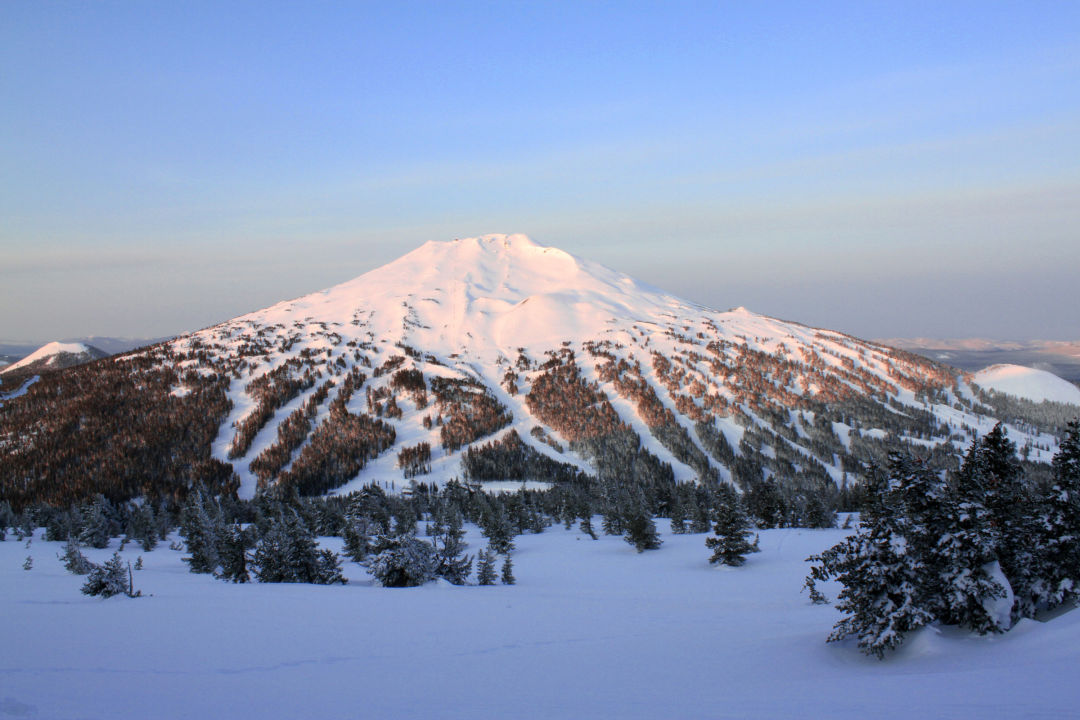
April
Ski in Your Swimsuit on Mount Bachelor
We don't mean you should literally strip down to bikini or board shorts before you take some hot laps—that's a good way to get a sunburn or snow rash in some highly inconvenient places. But if you haven't felt the freedom of skiing or snowboarding without a thick layer of winter clothing, try trading in the down jacket and goggles for a T-shirt and sunglasses. Everyone loves a good powder day, but late-season conditions such as spring slush—and oftentimes, snow that's better than slush at Mount Bachelor—can be just as fun. That goes doubly for park rats and people who enjoy sticking to freshly groomed runs. One of the best parts of spring riding is that by mid-April, other outdoor enthusiasts are already moving on to other exploits, which cuts the time you're stuck in a lift line. Pack your SPF 100, and really send the day off right with a portable grill (and perhaps a case of Rainier) for a little parking-lot barbecue action. —SS
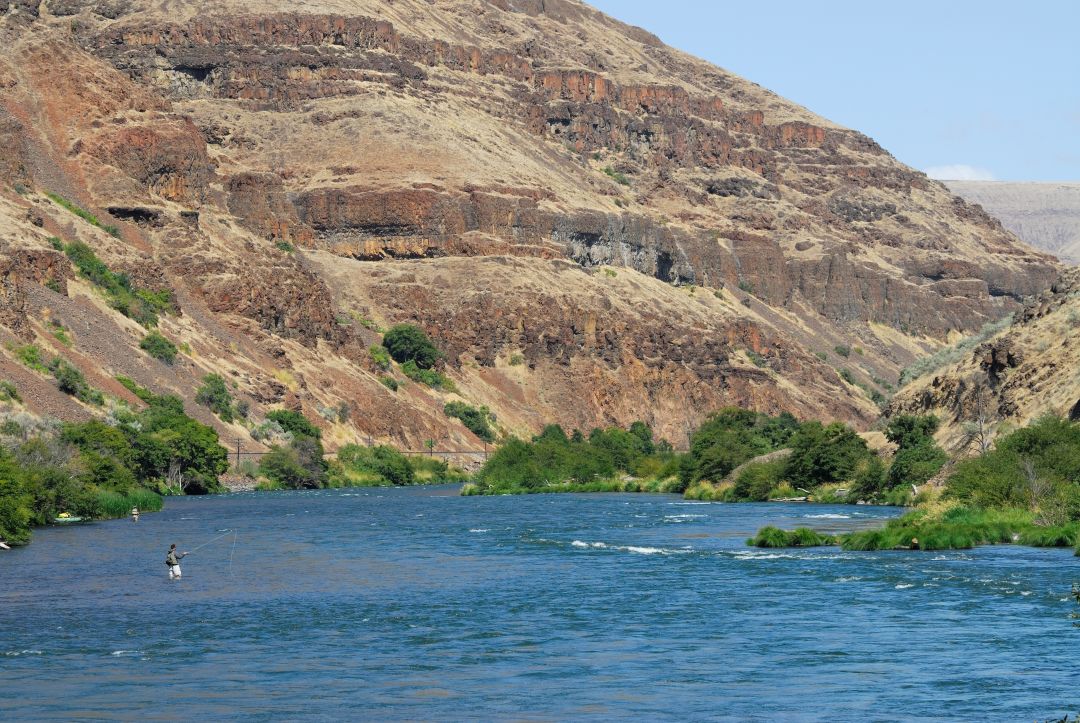
Fly-fishers flock to the Deschutes River each May for trout and steelhead when the salmonfly hatch is on.
May
Fly-Fish the Lower Deschutes
The salmonfly hatch that takes place each May on the Lower Deschutes River is a world-renowned event. These creepy crawlers are famous for the mammoth rainbow trout they attract to the river. Grab your fly rod and head to Maupin for easy access to the banks of the Deschutes, or charter your own drift boat and fishing guide to help you find the best spots. Rent a raft from one of the town's many outfitters and row your own craft to make a week of it. Dozens of campsites maintained by the Bureau of Land Management are accessible via road and water. Deschutes River State Recreation Area at the river's mouth on the Columbia River is also an excellent place for those without watercraft to camp and fish from the bank. —SS
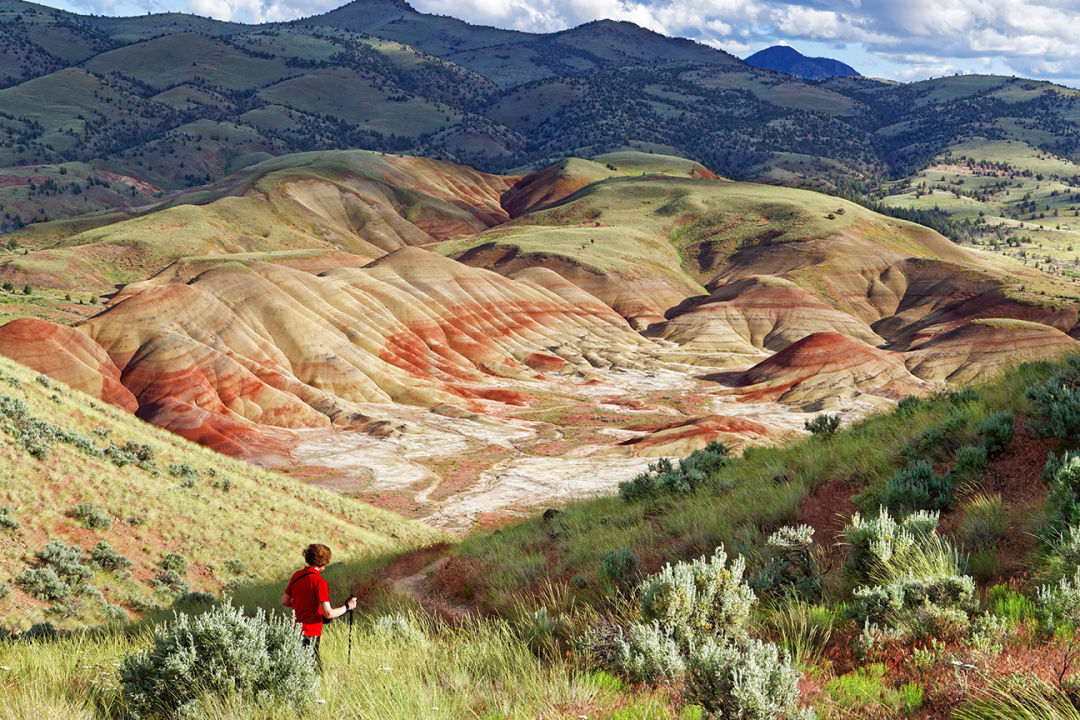
Oregon's Painted Hills and John Day Fossil Beds near the town of Mitchell are both a geological and paleontological wonder.
June
Marvel at the Painted Hills
If, like many, you associate Oregon’s lush natural beauty with cascading waterfalls, still lakes, and craggy coastlines forged from the wild Pacific spray—in other words, water in various majestic forms—then the Painted Hills can come as something of a shock. Who knew that in Oregon’s arid deserts one of the state’s most arresting visual landscapes rises in breathtaking color from the dry ground? Layers of red, rust, black, and gold give these sleeping giants with their knuckly folds an otherworldly feel, testament to the passage of time and changing climates. Bring your water bottle—there’s none on site and the sun gets hot here, especially in the early afternoon—and take one or more of five trails of varied lengths and difficulty for spectacular views (Carroll Rim, the longest, provides a panorama, though Painted Hills Overlook and Painted Cove also offer up a spectacle) or paleontological history (Leaf Hill Trail). There are some designated spots for wild camping in the hills, though the nearby town of Mitchell also boasts a hotel and other lodging options, and serves as a great jumping-off point for exploration of the area, including the Sheep Rock visitor center and the Clarno Unit, all part of the John Day Fossil Beds National Monument. —Fiona McCann
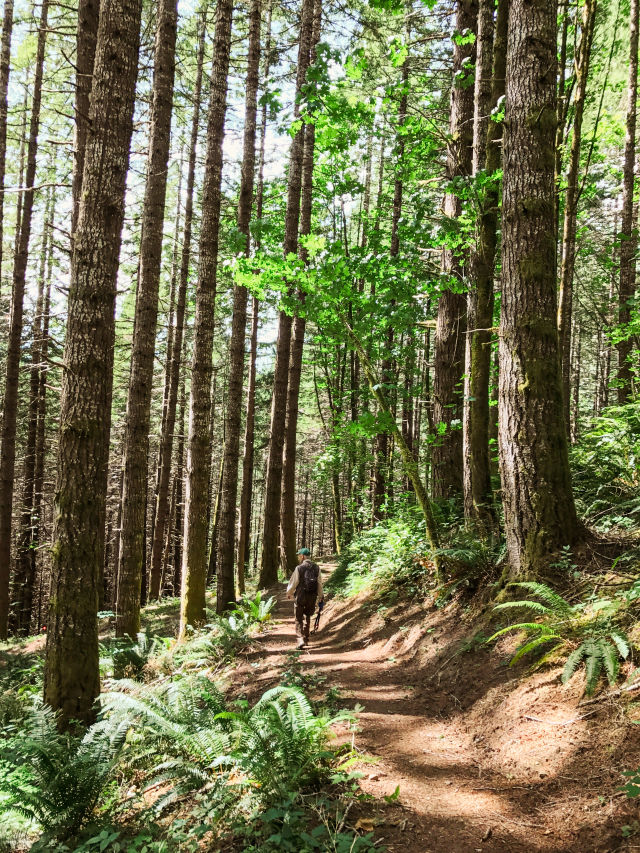
The Corvallis to the Sea Trail, completed, after nearly 50 years, in 2021
Image: Courtesy Kathy Caffuzo
July
Backpack from Corvallis to the Coast
In 2021, after nearly 50 years of tireless work (mostly from volunteer efforts organized by the Corvallis to the Sea Trail Partnership), the City of Corvallis celebrated the opening of the new Corvallis-to-the-Sea Trail, a 62-mile route that connects the Willamette Valley to the Pacific Ocean. The trail is a network of public land, abandoned roads, gated corridors, and low-traffic streets that stretches from Corvallis to Ona Beach at Brian Booth State Park, and it’s perfect for hiking or biking. Along the way, you also get to experience lush forests, wide-open vistas, flora, and wildlife. Be prepared—the trail is very difficult. With limited water along the route, travelers are encouraged to bring plenty of their own. Hustling hikers can complete the trek in just three days, but the C2C partnership says the trail is best over five or six days at a more leisurely pace. Prepare to camp out (in designated spots only!), and don’t forget to grab a free permit. —Gabriel Granillo
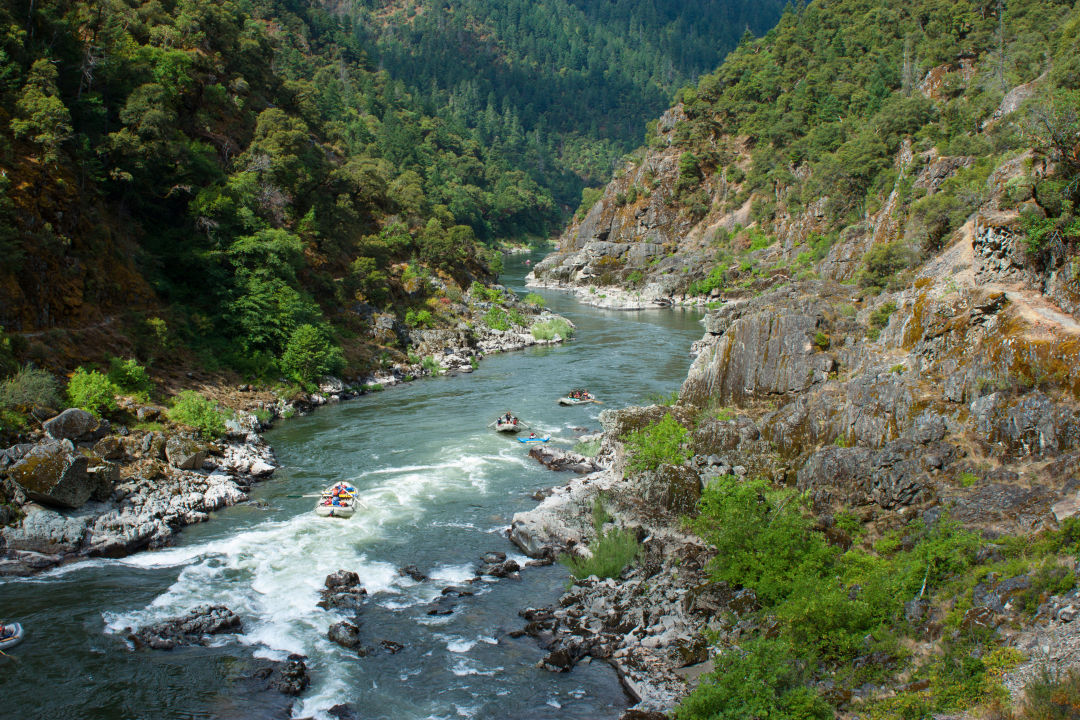
The Rogue River is one of the premier rafting experiences in the Pacific Northwest for both single-day and multiday trips.
Image: Shutterstock/JKendall
August
Raft on the Rogue
It’s hard to imagine a river more epic for white water rafting than the Rogue, which is 215 miles long and flows westward from the Cascades near Crater Lake all the way to the coast at Gold Beach. It was one of the original eight recognized by Congress in 1968's National Wild and Scenic Rivers Act. To get the full Rogue experience, opt for a multiday rafting trip. One popular option is a family-friendly four-day trip that spans 40 miles through the Siskiyou Mountains and ends at Foster Bar, passing through plenty of Class II and III rapids and one infamous, tough-to-maneuver Class IV rapid, Blossom Bar. Pitch a tent along the way or stay at rustic historic lodges by the riverbank. Short on time? Half-day and full-day trips are also available from many private rafting companies, complete with their own Class IV rapid. —Katherine Chew Hamilton
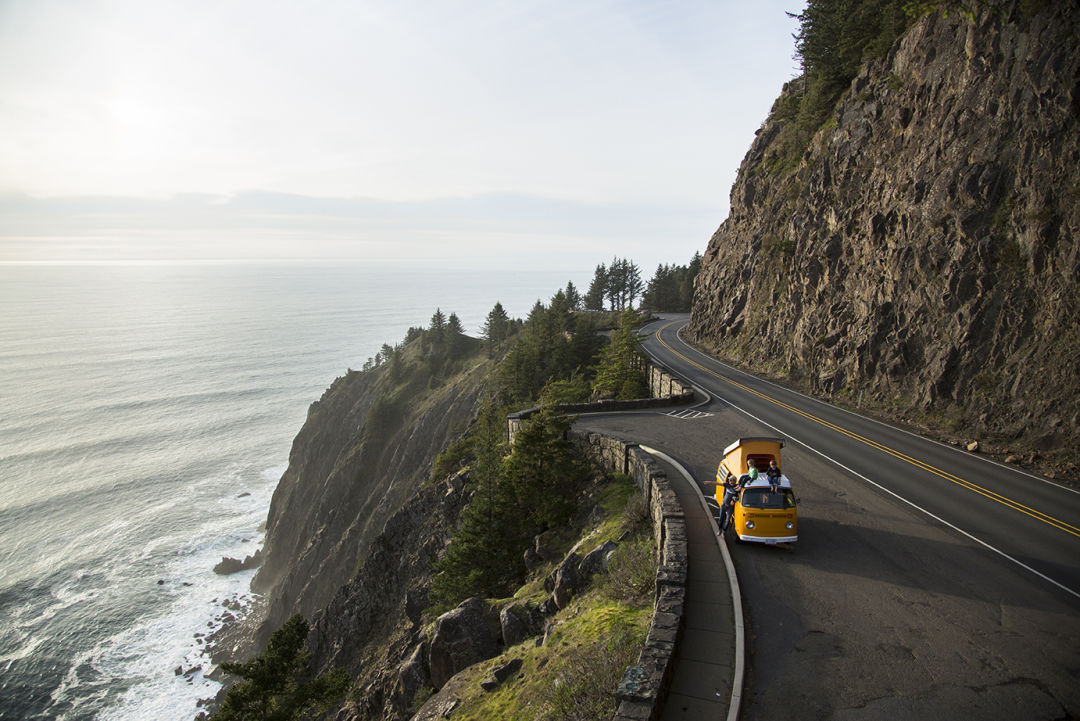
September
Drive the Oregon Coast Highway
From Astoria to Brookings, Oregon’s 363 miles of US 101 takes drivers past stunning shoreline views, dramatic cape hikes, looming sea stacks, working fisheries, swinging casinos, secret surf spots, and a cheddar mecca. In other words, don’t plan on being in a rush for any part of it. You’ll want to turn off at every beach and trailhead in the Samuel H. Boardman State Scenic Corridor, feel an urge to undertake a thorough scientific sampling of every seaside café’s fish and chips, and be tempted to stop and shoot your own car commercial south of Port Orford. The highway doesn’t hug the water the whole way, and unless you’re a 101 completist it’s worth the detour near Tillamook along Netarts Bay. (If the lunch window is open at Nevør Shellfish Farm, try what’s fresh, even if you’ve never heard of it.) Near Coos Bay, leave 101 to take the spur from Charleston to Cape Arago State Park. Also mandatory: a stop at Shore Acres State Park to behold the grand estate garden of a bygone timber baron. —MS
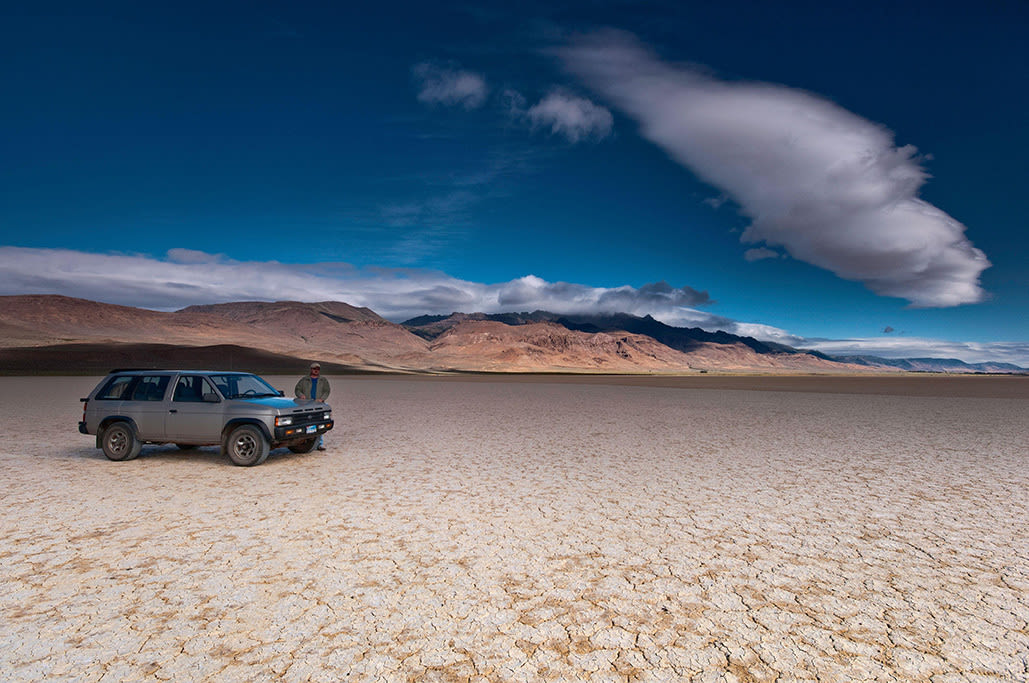
October
Tear It Up in the Alvord Desert
Tucked away in deep southeastern Oregon in the shadow of hulking Steens Mountain, a bleached white desert playa unfurls for miles. The Alvord Desert, a dry lakebed, looks like caked salt flats, but it’s actually alkali minerals—the same minerals that infuse the nearby Alvord and Willow Creek Hot Springs. This jaw-dropping landscape is well off the beaten path and a prime adventure zone, best visited during the dry fall season. Two daredevilish women broke the world’s land speed records there: Kitty O’Neil in 1976 and Jessi Combs in 2019. During peak season you can still spot other adventurers riding motorcycles, parasailing, or hiking in the nearby mountains. And, if you’re lucky, you may just catch the region’s wild horses drinking from nearby running water. —Karly Quadros
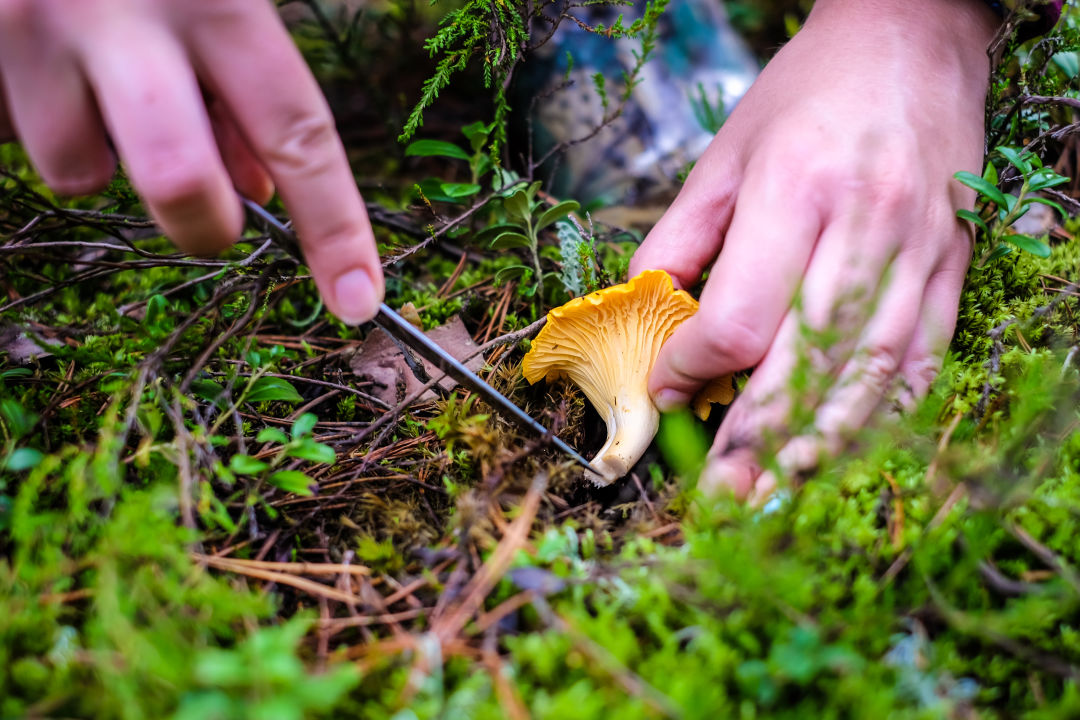
November
Forage for Mushrooms near the Salmon River
After the first big rain of the season, mushrooms abound in Oregon—chanterelles (Oregon’s official state mushroom), American matsutake, king bolete, lobster mushrooms, morels. From late August until December, you’ll find mushrooms near the Oregon Coast, the Cascades Range, the Willamette Valley, and elsewhere—pretty much wherever is moist and shadowy, which, of course, is a lot of places in Oregon. For a deep dive into old-growth wonder, spend a day foraging at the Old Trail near the Salmon River. Along this five-mile out-and-back trail you’ll discover a wealth of colorful mushrooms ripe for harvesting. The Salmon River, which runs along the western slopes of Mount Hood and merges with the Sandy River, keeps this area soggy year-round—perfect conditions for mushroom growth. Lucky visitors will also be treated to peak fall colors and the annual salmon run along the river. The Oregon Mycological Society offers more information, safety tips, and field trips. —GG
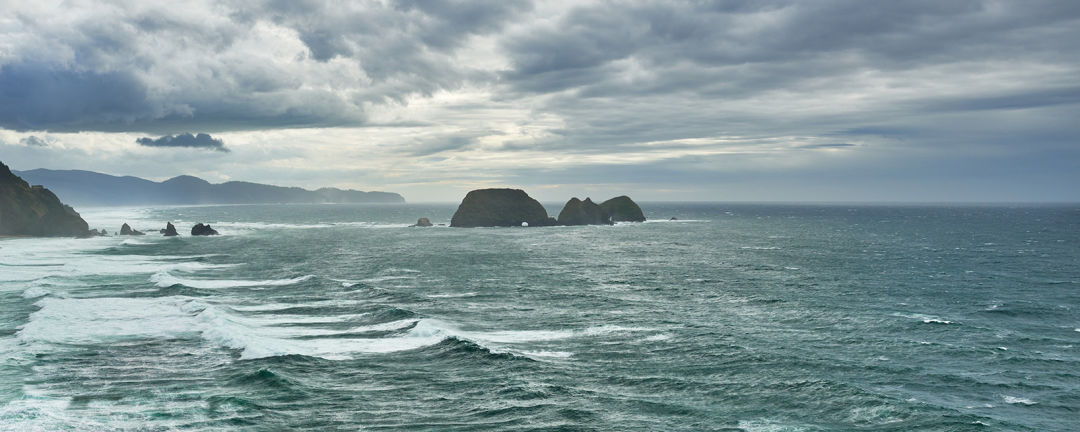
December
Storm-Watch at Cape Meares
The beach is synonymous with summer, but the Oregon Coast might be most impressive during late fall and winter, when waves upon waves crash dramatically against the shore. From Yachats to Fort Stevens there are plenty of places to cozy up in a seaside lodge and storm-watch, but our favorite is Cape Meares. While scoping out unparalleled views of the waves at this scenic viewpoint and wildlife refuge next to Tillamook Bay (do bring rain gear), be sure to visit the Cape Meares Lighthouse and the "Octopus Tree" Sitka spruce, which has been rooted here for more than 250 years. Once your watch is done, consider bedding down for a cozy night somewhere with a jetted tub and a fireplace (try the Inn at Manzanita). It’s been a long year. You’ve earned it. —GG
